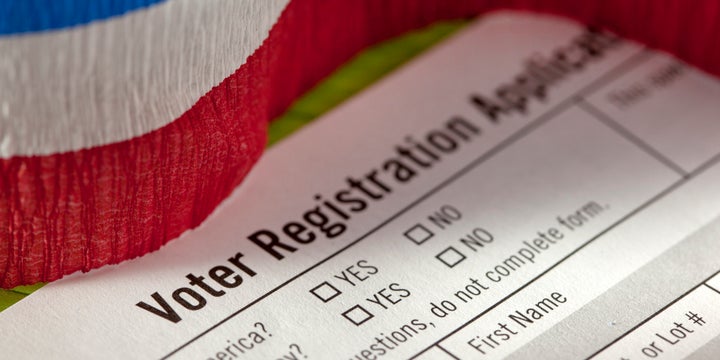
College students are modern-day nomads. They can go for years without a permanent address, hopping from dorm to dorm, college to college, or even country to country. During my own undergrad stint, I went away to school, lived in two different dormitories, traveled abroad and was briefly without a permanent home address when my mother decided to move during the school year.
This transient lifestyle is why this week’s Supreme Court decision to uphold Ohio’s purging of voting rolls may have broad negative implications for college students throughout the country.
According to the National Center for Education Statistics, about 20 million people are enrolled in college campuses across the United States. That’s 20 million eligible voters who, if other states adopt Ohio’s purging system, could be branded an infrequent voter.
Ohio’s purge process essentially removes infrequent voters from the registration rolls. Registered voters are sent an address confirmation by the state if they go two years without voting in an election; they then have four years to either cast a vote or confirm their address.
This creates a precarious situation for college students who often receive mail both at home and on campus. Students living away from home are no stranger to parents or siblings losing or discarding snail mail or forgetting about it altogether.
Furthermore, some students spend a semester or an entire year studying abroad and may not receive such government-related notices until they return stateside ― and that’s only if their family held onto it. If a student fails to receive the initial notice and continues to not vote, they may ultimately end up dropped from the registration list.
People can re-register to vote if they find themselves removed from the rolls, but they likely won’t discover they’ve been dropped until they show up to vote. I know I’ve personally never pre-checked my registration before heading to my polling station. And unfortunately, Ohio’s process requires people to re-register at least 30 days prior to an election.
“Since Ohio is determined to proceed with this purge process, it should at least offer same-day registration.”
That some may not receive their letters to begin with is a scenario that seems to have escaped Justice Samuel Alito in his majority opinion, in which he wrote, “a reasonable person with an interest in voting is not likely to ignore notice of this sort.” Ohio Secretary of State Jon Husted hailed the ruling as a victory for election integrity throughout the country.
These are cynical views that ignore the lifestyle of the average American college student. The ACLU and Sen. Sherrod Brown (D-Ohio) decried the decision as a blow to the democratic process.
The decision also further disenfranchises other vulnerable populations, such as the elderly and veterans, who may have residency issues or difficulty with acquiring proper identification. And it’s a continued assault on Democratic voters, particularly minorities, since voters from Democratic neighborhoods are twice as likely to be removed from voter rolls than those from Republican neighborhoods, according to a Reuters analysis. This is likely partially due to the fact that many Democrats, like college students, tend to not vote in midterm elections, which increases the likelihood they would be considered infrequent voters.
College students already face a clunky absentee voter registration process as it is. I didn’t turn 18 until the semester was in full swing, so I was unable to vote in my hometown elections; fortunately, I attended college in the same state in which I had permanent residency, so I could vote at the state and federal levels.
Students attending out-of-state schools are not so lucky. The out-of-state voting process varies by state, which can be challenging for young adults already working to navigate new environments as either first-year or transfer students. If a person misses a registration deadline or forgets to vote, they run the risk of being kicked off the registration list. Even the most woke student can get caught up in the bureaucracy of voter registration, especially if they get (rightfully) distracted by their studies.
Critics might agree with the majority opinion that implies six years is a sufficient amount of time to avoid getting removed from rolls once the notification process begins. But according to the National Student Clearinghouse, it can take five to six years to earn a bachelor’s degree, and students may attend multiple institutions across different states. For students who advance to graduate programs, this becomes a longer endeavor. More time in school. More address changes. More opportunities to miss a notification saying “vote or lose the right to do so.”
“Even the most woke student can get caught up in the bureaucracy of voter registration, especially if they get (rightfully) distracted by their studies.”
Another population of students who will be hurt by this decision are those who are experiencing homelessness. According to an April 2018 Wisconsin Hope Lab study, 36 percent of college students were housing insecure last year; this group of students are hugely vulnerable to any restrictions to voting access based on address permanency.
The life of a college student can make registering to vote difficult, and the Supreme Court’s decision to uphold Ohio’s voting purge may now make it difficult just to stay registered. The U.S. has a history of inequities in its voting system. From women to minorities to erosions to the Voting Rights Act in 2013, it’s becoming more difficult to cast a ballot. If this ruling will be anything like that of five years ago, states may take this as an opportunity to further restrict voting rights.
The Supreme Court must be more aware of and empathetic to the complicated lives of different populations and the ways in which the system disenfranchises these voters. Alito’s statement that if voting mattered to people, they would vote ignores the tendency for local governments to make voting more difficult. The 2013 decision to strike down Section 4 of the Voting Rights Act, coupled with this recent decision, demonstrates a willful ignorance of the history of racial-, gender-, disability- and education-based discrimination in this country.
The court should mandate that local governments make it easier for people to vote, not empower them to enact policies that punishes them for not doing so. Since Ohio is determined to proceed with this purge process, it should at least offer same-day registration so those who are blindsided when they show up to cast a vote can exercise their right when they are ready to. This could appease people who believe that the purge is just a political maneuver to tip the scales in favor of the GOP.
States like Ohio and others with similar approaches to purging voter rolls must consider more effective ways to communicate with college students. That, or exempt people who can prove they were students during the period for which the state demands they vote or provide proof of permanent residency. This is a unique population of eligible voters who deserve every opportunity to preserve a right they may not yet have had the opportunity to exercise.
Jessica Brown is a senior professional in residence in the multimedia journalism department in the School of Communication at Loyola University Chicago. She’s a Public Voices fellow with the OpEd Project.
